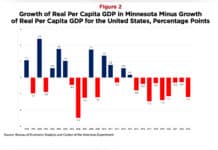Sponsored post by Principal Preservation Services and Principal Wealth Services

The new year is upon us and it’s not too late to make some financial resolutions.
In 2024, three in 10 Americans made at least one New Year’s resolution. Also, only about one out of every 10 Americans actually keep and work at completing their resolutions.
The reasons people give up on their New Year’s resolutions could be one thing or many things. Typically, reasons why people don’t stick to their resolutions are:
- Setting unrealistic goals—it’s easy to give up when you try to accomplish too much or do too much when you haven’t had a great track record in the past.
- Lack of a plan to achieve the goals—when it comes to goal setting, you need to be detailed in the process to get to the end result.
- Lose motivation due to the lack of accountability—it’s important to have someone to lean on to keep you accountable whether that is your loved one or good friend. If you set a goal not to eat out more than once a week, that partner hopefully can be bold enough to remind you of your goal or even just encourage you that your progress is being noticed.
Create a budget
Let’s start with the basics and that is creating a budget. Before setting any resolution,
you must know what your income is and you must know what your monthly expenses are. Don’t guess at this! I find that people like to skim over this and they tell me what they think they are spending, but when I find out what their take-home pay is and then tell them that they must be saving a lot of money every month—that’s an eye-opener.
While doing this comprehensive budget, you should be able to identify some places where you are spending too much money and make some quick savings and adjustments.
Pay off debt
Debt keeps us all on a limited plan. When we carry too much debt, we don’t get to do the things we dream of because we work so hard just to pay the interest on something we purchased two years ago.
Let’s make a point to focus on those credit cards and student loans first. With Christmas behind us, many people spent more than they planned and now need to make a plan to eliminate that debt fast. My recommendation is to focus on the lowest debt account that you have. If you have multiple debt accounts, make only the minimum payment on those accounts but apply all of your other available dollars to the smallest debt.
You will gain confidence and momentum by seeing this debt eliminated quickly. Once that debt is gone, do the same thing with the next smallest debt and so on and so on until your bad debt is gone. I hope this year, you can create a new resolution to only use credit cards as a convenience, pay them off monthly, and see how much money you can get back in
rewards.
Establish a healthy emergency fund
According to Bankrate.com, only 44% of Americans have at least three months of expenses
saved for emergencies and 27% don’t have anything saved at all for emergencies!
When life happens—furnace repair, tree falls down, car repair, hospital bill—whatever
could happen, that is when and why you need to have the appropriate amount of money set aside so you can cover those expenses without having to sell investments or charge it on your credit card. While in your working years, you should have 3-6 months of your expenses for immediate availability, like checking and savings.
While in retirement, I do recommend 6-12 months of your expenses saved for an
emergency. You would need more then because you will be on a fixed income and you don’t
need surprises while in retirement.
Save for retirement
About 25% of workers are not contributing enough money to get the full company match
in their 401ks. You’re giving up free money if you aren’t at least getting the full match.
If your employer is matching 5% of your income as long as you do the same, that’s the minimum you should start off with. If you only contribute 3%, then your employer will only do the same. For a 25-year-old making $100,000, contributing 3% with a 3% match with an average return of 6%, that person would only have around $1.2 million at age 65. If that same person contributed 5% and then receives a 5% match, they would have a little over $2 million at age 65—that’s almost double.
And that doesn’t even show increased contributions like we should be doing every year. If you increased your contributions by 1% every year as you received raises and didn’t increase them after 25 years, you would now have just shy of $3 million at age 65.















